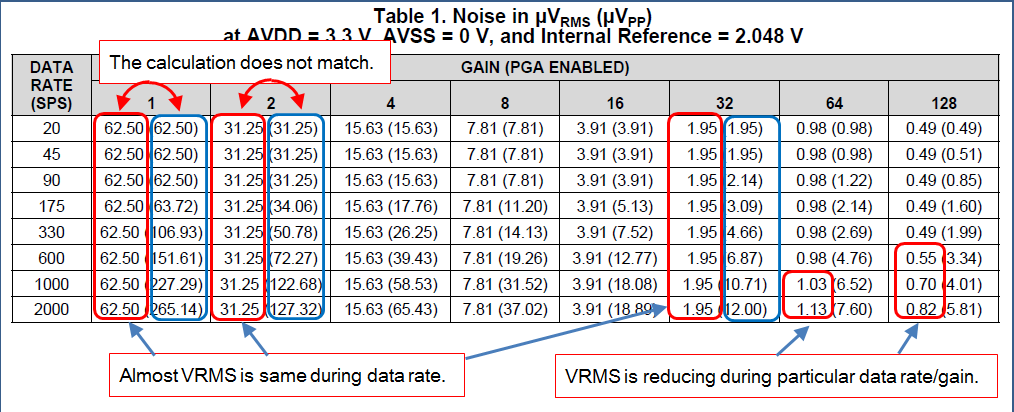Other Parts Discussed in Thread: ADS1220, ADS1120
Hello,
Regarding to the noise performance(table.1, page61) on ADS1120-Q1,my customer is asking some question.
(Question)
(1) I’m understanding about the conversion from noise VPP to noise VRMS by following formula.
VRMS = (VPP/2) /√2
But almost noise VRMS value are same. Why are these data are same?
(The calculation does not match by above formula.)
Could you please tell me this reason?
(2) According to 7.1 Noise Performance(page61), the input referred noise drops when reducing the output data rate.
But the almost input referred noise(VRMS) in figure.1 is same during all data rate.
Why are these data same during this data rate range?
Could you please tell me this reason?
(3)However, only input referred noise values(VRMS) during particular rate at gain=64-128 are reduced by the output data rate.
Why are these data reducing during only this data rate range/gain?
Regards,
Tao2199


